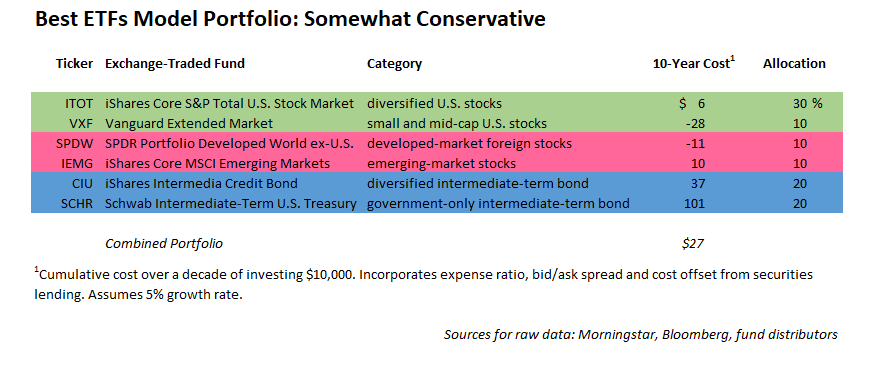[ad_1]
 Charles Schwab Investment Management (CSIM), one of the biggest ETF managers in the country and one of the fastest growing, is about to welcome a new CEO. Jonathan de St. Paer will take over the reins from current CEO Marie Chandoha next month. On the sidelines of Inside ETFs last week, we caught up with de St. Paer to talk about what’s working for CSIM and where he’s hoping to lead the company next.
Charles Schwab Investment Management (CSIM), one of the biggest ETF managers in the country and one of the fastest growing, is about to welcome a new CEO. Jonathan de St. Paer will take over the reins from current CEO Marie Chandoha next month. On the sidelines of Inside ETFs last week, we caught up with de St. Paer to talk about what’s working for CSIM and where he’s hoping to lead the company next.
ETF.com: Where has growth come from at CSIM in recent months?
Jonathan de St. Paer: Here’s the big picture: ETFs are a really important part of it, but there’s a lot more that happens in addition to ETFs.
In late 2017, we had about $300 billion in assets under management, and today CSIM oversees over $380 billion—2018 was a really big growth year for us.
At the end of 2017, we had $99 billion in ETFs. Now we have over $126 billion; in 2018, we had about $26 billion of inflows. That’s the highest growth rate of any of the top 10 ETF managers, and CSIM is now the fifth-largest ETF manager.
ETF.com: Are lower fees on mutual funds an effort to deter investors from switching to ETFs? ETFs have been loss leaders for Schwab, so what’s the rationale behind bringing down mutual fund fees as well?
de St. Paer: Fundamentally, you’ll hear me talk about three things: simplicity, scale and service.
When it comes to simplicity, in some ways, it’s about listening to our clients and asking them what their biggest needs are. We don’t want to do all things; we want to do a limited number of things really well. And we want to do them in ways that scale.
From that perspective, the need a client has for U.S. large-cap exposure or international exposure, or aggregate bond, is not an ETF need or a mutual fund need; it’s a need for the exposure. We don’t want our pricing to incent them to go into one vehicle over another. It’s the same tool in their tool kit, and it’s just a slightly different way of getting it. We thought it would be important and a big step to be able to bring the pricing down as low as we had on ETFs.
But an important part of that, as well, is that we eliminated all investment minimums, offering a single share class, and that sparked a lot of the growth in the index mutual fund side, and really brought the funds and ETFs to parallel in terms of their value proposition.
Fundamentally now it comes down to which vehicle is right for your preference.
ETF.com: Have asset flow trends changed within CSIM after the pricing move?
de St. Paer: We found that those who were comfortable where they were tended to stay there. ETFs are still growing faster than index mutual funds, but we still have about $75 billion in index mutual fund assets.
In indexing, we manage $200 billion, which includes roughly $125 billion in ETFs and $75 billion in index mutual funds—it’s still a very big asset base and a very big part of our business.
What was interesting was that more small and midsize institutions began asking us to bid or have conversations around the index mutual fund space because of the lack of share class. That move got a response. We saw a lot of 401(k) plans and a lot of smaller and midsize institutions talk to us more, and that’s been part of that growth as well.
ETF.com: In ETFs, Schwab has focused on core, on “simple is better.” Will that suffice to fuel enough ETF growth and potentially displace the likes of BlackRock?
de St. Paer: There’s a two-part answer: 95% of the assets in the ETF space are in U.S. equities, international equities and U.S. fixed income. The majority tends to be in core-kinds of market-cap categories, in ETFs with expense ratios of 0.10% or less.
Assets and flows tend to be in those core categories where being simple—meaning transparent, straightforward—matters. So, yes, we do think core simplicity can drive a lot of growth.
The second part of that answer is that the risk with that is that “what’s core” changes over time. We think emerging markets are a core component of a portfolio, but 20 years ago, that point of view may not have been.
How is core going to evolve? Focusing on the core doesn’t mean you never change; it doesn’t mean you never launch new product. It means we’re extremely diligent about understanding what clients are looking for, how they’re going to use it in a portfolio, and what aligns with our capability.
The core in the simple products do have a lot more room for growth, but it can’t come with blinders.
ETF.com: As you take the CEO post in March, what’s going to be your footprint in this space?
de St. Paer: What I think is exciting is that the world in the next three years is going to be very different from the world in the last three. The market’s going to be different.
We’re not going to have a nine-, 10-year bull market the way we have had. We’re probably going to see more volatility. Clients are going to behave in a different way. Competition’s only going to increase. The role of technology is only going to evolve, requiring more investment and more judgment on where to invest and where not to.
Contact Cinthia Murphy at [email protected]
[ad_2]
Source link Google News

